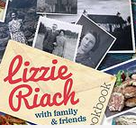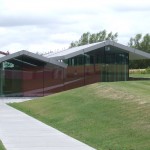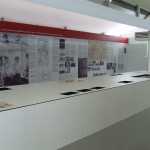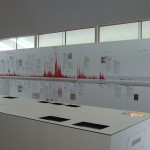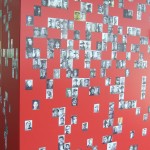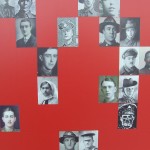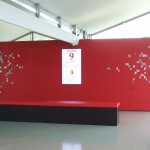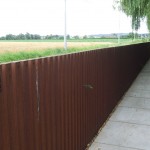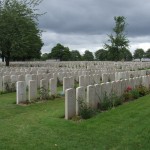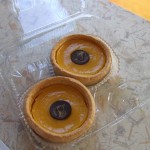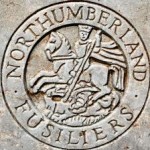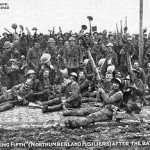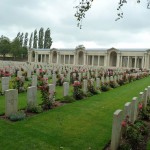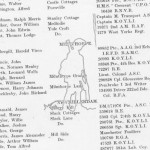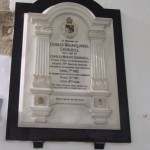Lijssenthoek Military Cemetery nr Poperinge has a very special place in my heart, not only does my great uncle rest there but Nellie Spindler from my home town also calls Lijssenthoek ‘home’. But recently while doing a bit of research I came across another man whose final resting place is also Lijssenthoek – Conrad Hugh Dinwiddy.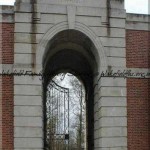
I think his name sounded similar to a place we used to stay on our way up to Lhangbryde when I was a child, so what do you do, or should I say ‘I do’ but find out a little about him………you know the thing, who were his parents, where did he live and what did he do before joining the forces and who survived him. Here goes….
While waiting for a website to open I thought I’d try Wikipedia – lots of info there, not always correct but is somewhere to start and to my surprise there was not an established page for Conrad, there is an opening if any one wishes to start a page for him.
Here we go ! Conrad was born early in 1881 to Thomas Dinwiddy and his wife Eliza Charlotte nee Rooke (b. 1845 Marylebone). In the census shortly after Conrad’s birth Thomas was aged 37 and was working as an Architect and Surveyor (b 1844 Bristol). The family lived at 12 Croom’s Hill, Greenwich (now the London Fan Museum)– the road was home to other professionals and retired servicemen incl. William Rivers Retd., RN; Gay Shute, Surgeon; Thomas Creed(?), General Practioner MRCSE St Andrews Uni.; others include Stationers, Annuitants.
Thomas Dinwiddy is noted for having designed the main administration block (Grove Park Workhouse) of what was Grove Park Hospital. The plans were approved in 1897 and the foundation stone put in place 2 years later. The plans were presented at the Paris International Exhibition in 1900 and won a Diploma of Merit. One of the local roads is named after Thomas. In the early 1990’s the site was sold for housing development but Thomas’s administration block and a some of the original workhouse buildings survived. The site had not been listed by the local authorities. One of the buildings designed by Thomas did manage to get a listed status – Laurie Grove Baths including : swimming baths, slipper baths and launderies were designed in the mid 1890’s commissioned by the Vestry Board of St Paul’s Deptford under the Public Baths and Wash-houses Act of 1846. The building is of Jacobean style and still has many of its original features. A few other buildings by Thomas were Greenwich Board of Works Offices and Roans Girl’s College, Greenwich.
Ten years later, 1891, Conrad was hard to find on the census but eventually by just putting his year of birth +/- 2 and Greenwich as his place of birth he is found. He is at a school with some of his brothers in Walmer, Kent.
Another ten years on in 1901 the family are at The Manor House (?), Croom’s Hill – Eliza with her children, Conrad by now is classed as a student, and four servants but no Thomas. Thomas was in fact staying at the Adelphi Hotel, Ranelagh Place, Liverpool with people from all walks of life incl. George Herbert Lindsay of Edinburgh a Distiller; Daniel Shurmann a Merchant born in Russia. That solved that problem, so now forward a few years.
On 27 September 1909, Conrad’s elder brother Malcolm, Capt., Royal West Kent Regt., who had served in Singapore, married married Miss Laura de Satge, dau. of the late Mr Ocar de Satge, late member of the Upper House of Queensland. The wedding took place in Folkstone and Conrad was the Best Man with various cousins from both sides being bridesmaids. Guests included Lords and Knights of the realm and serving regimental Officers
The 1911 census finds that Conrad is now a newly married man. He had married Winifred O Pochin in the Autumn of the previous year. Conrad worked as a Surveyor employing a number of people and they lived at 76 Warwick Gardens, Kensington, a nine roomed house, with a number of servants and was a member of the RICS, which held a portrait of him.
Conrad served in the military and various entries in The London Gazette have him serving in various ranks incl. Temp Captain. But it is The Medal Rolls Index Cards that tell a better story.
Conrad initially served in the RFA as 157860. Later serving in the RGA as a 2/Lt., and now has no service number as Officers were not issued with a number at this time. He is later in the 13/Siege Bty, RGA as an A/Major, then Major, with a medal entitlement of The Victory Medal and The British Medal.
Conrad was the inventor of the ‘Dinwiddy’ Range-finder for detecting enemy aircraft – this was adopted by the War Office. He was also a Councillor for the Borough of Kensington and a known mountaineer.
C H was one of five children and had three brothers in the services.
Conrad Died of Wounds received on 27 September 1917 aged 35, leaving Winifred and a young son, Hugh P Dinwiddy born in 1912.
Conrads brothers – Major Malcolm J Dinwiddy, as we have already said he married in 1909. He served in the Royal West Kents and applied for his service medals in June of 1920. He died on 19 November 1925 aged 46 and had at least one child. Probate was granted to Laura Emily Dinwiddy, widow or Fairview, Osborne Road, South Farnborough.
Donald Dinwiddy, married Ella May Jones in 1909. He died on 19 February 1937. Probate was granted to Ella Mary Dinwiddy of Red Cottage, 54a Parliament St, London
Harry L Dinwiddy. Harry Lurwyche Dunwiddy married Ethel Maud MacArthur in 1903 and by 1911 they were living at 13 Pond Road, Blackheath with their son Thomas Lurwyche and a number of servants – Harry working as a solicitor. He was living at Little Paddock, White Beam Way, Tadworth when he died on 21 April 1950. Probate was granted to Thomas Lutwyche Dinwiddy, solicitor on 8 June of that year.
Conrad also had a sister – Dora, she married Stanton Freeland Card, a Royal Navy Instructor, in 1902 and by 1911 they were living with their three children and a few servants at Parkhurst, Westcombe Park Road, London. Stanton of 24 Crown Lane Gardens, Streatham died at Putney General Hospital on 6 October 1940 with probate granted in Llandudno on 2 July to Westminster Bank Ltd. Dora of Lawrence Road, Hove died on 24 March 1945 with Probate being granted in Llandudno on 20 December of the same year to Harry Lutwyche Dinwiddy, Solicitor.
Sources :
Singapore Free Press and Mercantile Advertiser. Issue 29 Mar 1909, page 5
Ancestry.com.
Freebmd
The Fan Museum
Heritage-explorer.co.uk
Archiseek
Lost Hospitals of London
Flight Global
Like this:
Like Loading...
